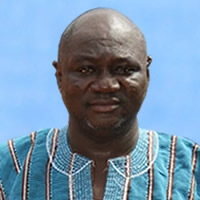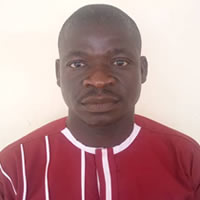Dams
The district can boast of four (Four) dams located at Lower Nansoni, Tombu, Chereponi and Saboba and, a few dugouts. They are basically sources of water for livestock and occasionally, human beings, too. Except Nansoni dam, which is used for dry season gardening where the water stock lasts into the dry season, most of the dugouts have been silted and require immediate de-silting.
Roads
A good transportation network and a reliable communication system are very important ingredient for socio-economic development. This is a serious handicap in the district. There is a very poor network of secondary roads in the district. These include the 58km Yendi-Demon-Saboba road; the 65km Yendi-Wapuli-Saboba road; the 48km Saboba road and the 96km Yendi-Chereponi road. The physical conditions of some of the roads are bad and virtually inaccessible during a greater part of the rainy season, especially between July and October.
Transportation within and outside the district is very poor. Most people rely on either bicycle or on their feet. People walk several kilometres to attend markets, hospital and even to school. Currently there is a weekly direct transport service between the regional capital, Tamale and the district capital, Saboba, being run by a private concern. The number of vehicles shuttling between Saboba and Yendi on one hand, and Chereponi and Yendi on the other hand, for commercial purpose has improved considerably.
Energy
At the district level, it is only Saboba, Sambuli, Demon and Kuntuli which have access to electricity as source of lighting (6.9%) as compared to more than 93.1 per cent in the rest of the district. Apart from the obvious benefits of lighting, the availability of electricity is closely associated with health, economic and social activity and living conditions; for example, cereal and grain mills require electricity.
Non-availability of electricity may influence access to television and radio and, therefore, access to information that may have direct impact on health. On the other hand, availability of electricity may facilitate the use of the refrigerator and, therefore, directly impact storage of food within household. Table 2.1 below indicates main source of lighting in the district.
The distribution of the type of main fuel used by households for cooking. About 93.2 per cent of households in the district use wood as a source of energy for cooking; 3.5 per cent use charcoal; 2.5 per cent use kerosene and 0.4 per cent use other forms of energy such as electricity and gas.
The low use of LP. Gas for cooking needs to be addressed with realistic programme objectives to reduce the high use of wood and charcoal combined which constitute 96.7 per cent of all cooking fuel in the district. One of the main objectives of such a programme will be, to make available to households in the district, smaller gas cylinders which are not only affordable but will enable L.P.G. to be bought in smaller quantities.
The type of fuel source used by a household may be related directly or indirectly to health outcomes. The poor may use considerably more wood, dung, and other biomass than the rich. As a result, they may generate high-levels of indoor pollution, leading to increases in the incidence of respiratory illness and other health problems. Lack of utility services implies that many women may spend several hours a day fetching firewood for the household, diverting these women from income generation activity and childcare activities.
Post Office Facilities
Table 2.3 presents the distribution of communities by distance to the nearest post office in kilometers. Postal agency facilities are not generally easily accessible in the district. There are two postal agents at Saboba and Chereponi whose main duties are receiving and delivery of letters. A post office facility is located within ten kilometers but less than a of localities in Saboba (11%).
The distribution of communities by the distance to the nearest telephone facility in the district. The table brings to light not only the uneven distribution of telephone facilities in the district in but particularly, the very skewed distribution of whatever telephone facilities are available. Saboba (4.8%) has less than five per cent (5%) of localities with a telephone facility within a distance of 15 kilometres.
If communities at grass root level in the district are to be effectively involved in on-going development affecting them, they need to be well informed and have effective means of communicating their ideas and seeking further information. The telephone is the best means of such information sharing. The current situation of access to a telephone facility is far from satisfactory in the district.
Access to mobile phones in the district is very limited due to inadequate of information technology network backbone. Only Saboba and certain communities have access to mobile service providers (One touch, Areeba, Tigo and Kasapa) because Areeba is operating in the district capital, Saboba. However, communities in Chereponi sub-district do not have access to Mobile service providers because they do not fall within coverage area.
Date Created : 11/18/2017 7:57:34 AM





